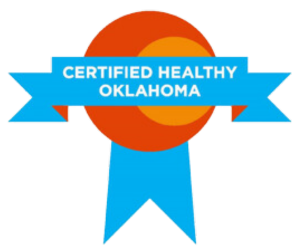TULSA, OK – [September 3, 2015] – Life expectancy is one of the most fundamental measures of the health of a community, and where you live can determine how long you live.
In 2000, the life expectancy among Tulsa County residents varied by as much as 13.8 years: the life expectancy for residents of 74126 in north Tulsa was 66.8, compared to that of 74137 in south Tulsa, which boasted 80.6 years.
“It’s harder to be healthy when you live in north Tulsa. Not only has this area of town experienced high rates of heart disease, stroke and cancer three times the national average, but they have also experienced lower life expectancy rates than others across Tulsa County,” said Dr. Gerard Clancy, University of Tulsa vice president of health affairs. “The grave health disparities that existed between the northern and southern regions of Tulsa were alarming.”
The Tulsa Health Department and several key partners recently completed a life expectancy analysis which applied best practice strategies to calculate the life expectancy at birth for residents of the 43 Tulsa County ZIP codes, specifically concentrating on 74126 and 74137 which had the most drastically different life expectancies. The study was funded in part by the George Kaiser Family Foundation and compared data from 2000-2002 to 2011-2013.
THD researchers found that in a rare turn of events, ZIP code 74126 experienced the greatest improvement in Tulsa County to narrow the gap to 10.7 years – an impressive improvement in a relatively short amount of time.
“The narrowing of the life expectancy gap demonstrates that improvements in health are possible,” said Reggie Ivey, THD chief operating officer. “It’s been our goal to ensure that everyone across Tulsa has an equal opportunity to live a long and healthy life.”
In the last decade, public health officials, community partners, city leaders, philanthropists and universities have made great strides to increase access to health care in north Tulsa. Community health clinics, programming and resources are more accessible than ever before.
“This is a prime example of a community coming together in order to influence social change. Initiatives such as the Heart Improvement Project, stabilization of OSU Medical Center, and construction of health clinics such as the OU Wayman Tisdale Specialty Clinic, THD’s North Regional Health and Wellness Center and Morton Comprehensive Health Services Clinic improved access to quality healthcare in north Tulsa,” said Monica Basu, senior program officer at George Kaiser Family Foundation.
However, many other factors determine one’s quality of life, including the social, economic and environmental conditions in which a person lives.
ZIP code 74137 located in south Tulsa and mostly in the Jenks school district, had the 11th lowest percentage of the population below poverty and one of the highest reported median incomes in 2013: $81,322. In sharp contrast, 74126 is comprised of neighborhoods in north Tulsa and had one of the highest percentages of the population living below poverty and the third lowest reported median income for the same year: $25,191.
“Increased access to healthcare services is only the first step. Improvements in education, employment, economic development, and transportation must take place in order for all of Tulsa County to enjoy a longer life,” said Dr. Bruce Dart, THD executive director.
While the improvement in life expectancy in 74126 is certainly commendable, significant disparities still exist. In the 2011 – 2013 analysis, ZIP codes 74130 and 74133 now have the largest life expectancy disparity gap with 12.3 years difference between the two. 74130 located in the north Tulsa area had the lowest life expectancy at 68.5 years, while 74133, located in south Tulsa, had the highest life expectancy at 80.7 years.
Additionally, Tulsa County has an overall lower life expectancy in comparison to the United States. During 2011 – 2013, the national life expectancy was 77.2 years and Tulsa County’s life expectancy was 76.0 years. While both the Tulsa County and national life expectancies have increased in recent years, the national life expectancy has increased 2.1% while Tulsa County’s life expectancy has increased 0.8%.
“Strengthening partnerships, utilizing data associations, analyzing trends over time, developing methods to measure causality moving forward – these are the studies of our population that can assist our community leaders to make the best choices for continued community-wide improvement,” said Dart.
About Tulsa Health Department
Since its establishment in 1950, the Tulsa Health Department serves as the primary public health agency to more than 600,000 Tulsa County residents, including 13 municipalities and four unincorporated areas. THD’s mission is to sustain an equitable system that prevents disease, promotes healthy living, and ensures preparedness. The agency is dedicated to empowering citizens to make healthy choices that carry forward for future generations. THD was among the first health departments in the U.S. to receive national accreditation through the Public Health Accreditation Board.
About George Kaiser Family Foundation
George Kaiser Family Foundation (GKFF) is a charitable organization based in Tulsa, Oklahoma, Type I 509(a)3 supporting organization of the Tulsa Community Foundation, dedicated to providing equal opportunity for young children in our community through investments in early childhood education, community health, social services, and civic enhancement.






